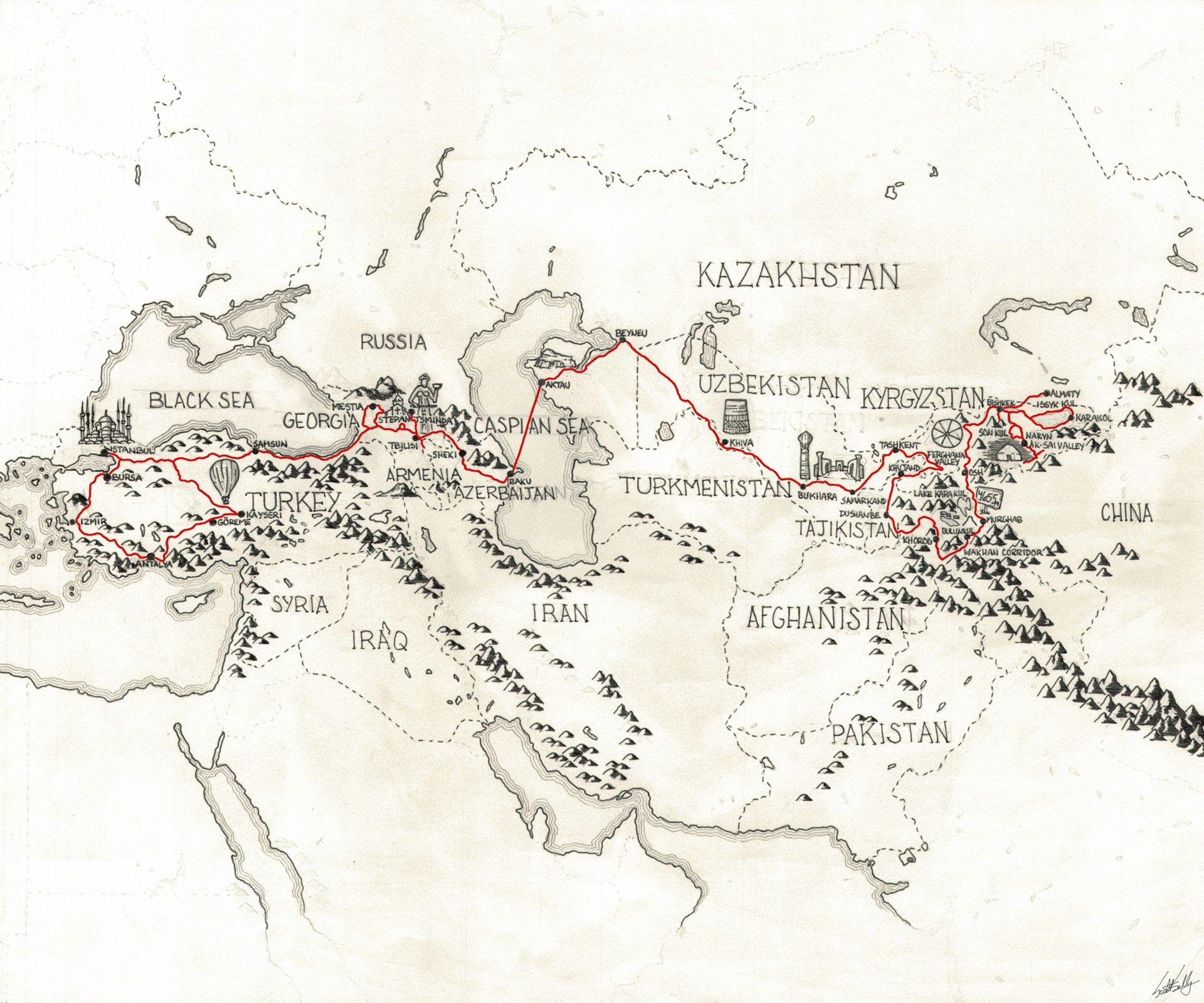The Overland Book is a young man’s exploration of life beyond the Silk Road

THE SILK ROUTES
Not from a single road, but rather hundreds of ever evolving routes, the Silk Road first took shape in 130BC, when the Han dynasty developed interest in what lived beyond their western mountains.
Enamoured by the far superior horses bred in the Ferghana valley, they traded silk for steed. In turn, paving the first section of the Silk Road. before long, Chinese silk had made it all the way to Rome. The East and West were now formally engaged, the Old World connected.
The Silk Road, or perhaps more fittingly Silk Routes, facilitated the trade of just about every good imaginable. silk, spices, paper, and gunpowder moved west, while gold, glass, camels, and Christianity ventured east.
Seldom traveled in its entirety, traders would instead journey between two cities such as Bukhara and Khiva, selling goods that would increase in value as they continued to move further from their origin. By the time a piece of silk traveled from China to Constantinople, it would likely have passed through the hands of no less than ten traders.

THE NEW CENTRAL ASIA
Starting in the mid 19th Century, the Russian Empire began a conquest of Central Asia that resulted in the formation of Russian Turkestan. In 1918, along with a regime change in the motherland, this territory would become Soviet Central Asia. Until this point, the empires of this land had never been confined to our modern concept of national borders. Whilst Stalin's strategies and intentions remain an ongoing topic of debate, he split up the territory into five separate Soviet socialist republics, the five countries that now makeup Central Asia. For the first time in
As the Soviet Union fell in 1991, Central Asia found itself free from over 100 years of Russian rule. More importantly, the people now stood as citizens to independent countries for the first time in their history. These fledging nations have now been left with the task of tethering a line between building a new national identity and reclaiming their ancient history. Young and old, the middle of the world is at the crossroads of time. The question now being asked is, will it ever again become a crossroad of trade?
In 2013, China announced the Belt and Road Initiative in the hopes of once again shifting economic focus back to Eurasia, a project with the makings of a renaissance, a possible Silk Routes 2.0. However, before we get too invested in the future, perhaps it would be best to first examine the past, to take a journey through the middle of the world.






